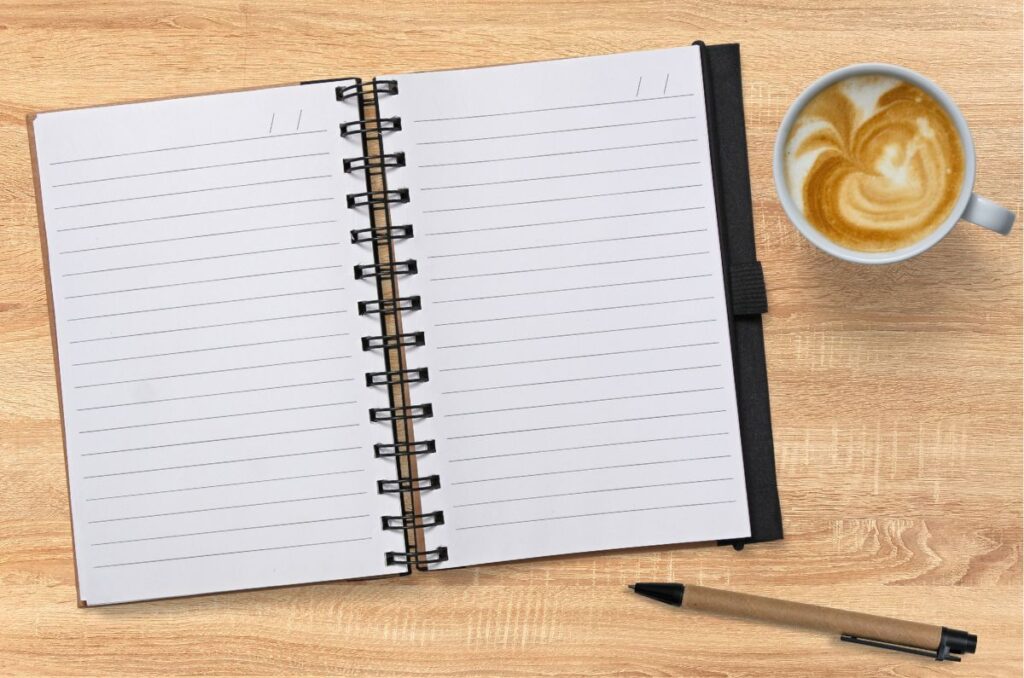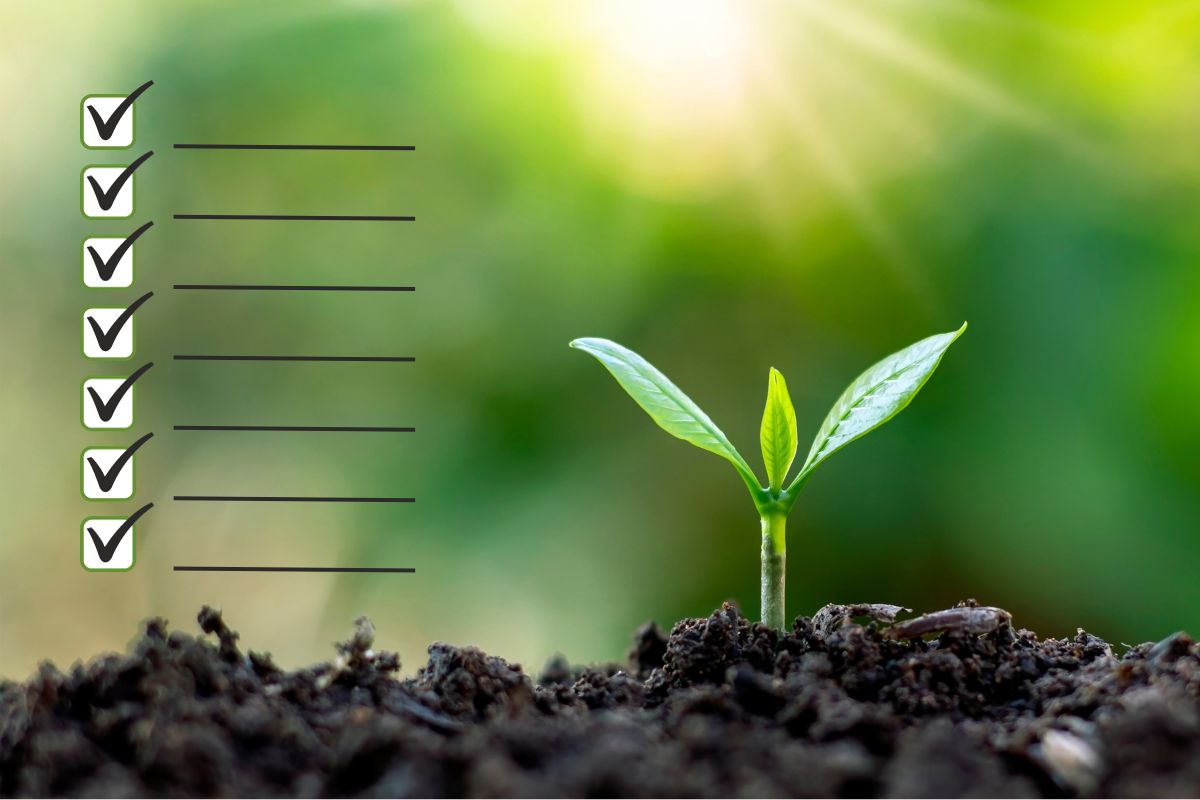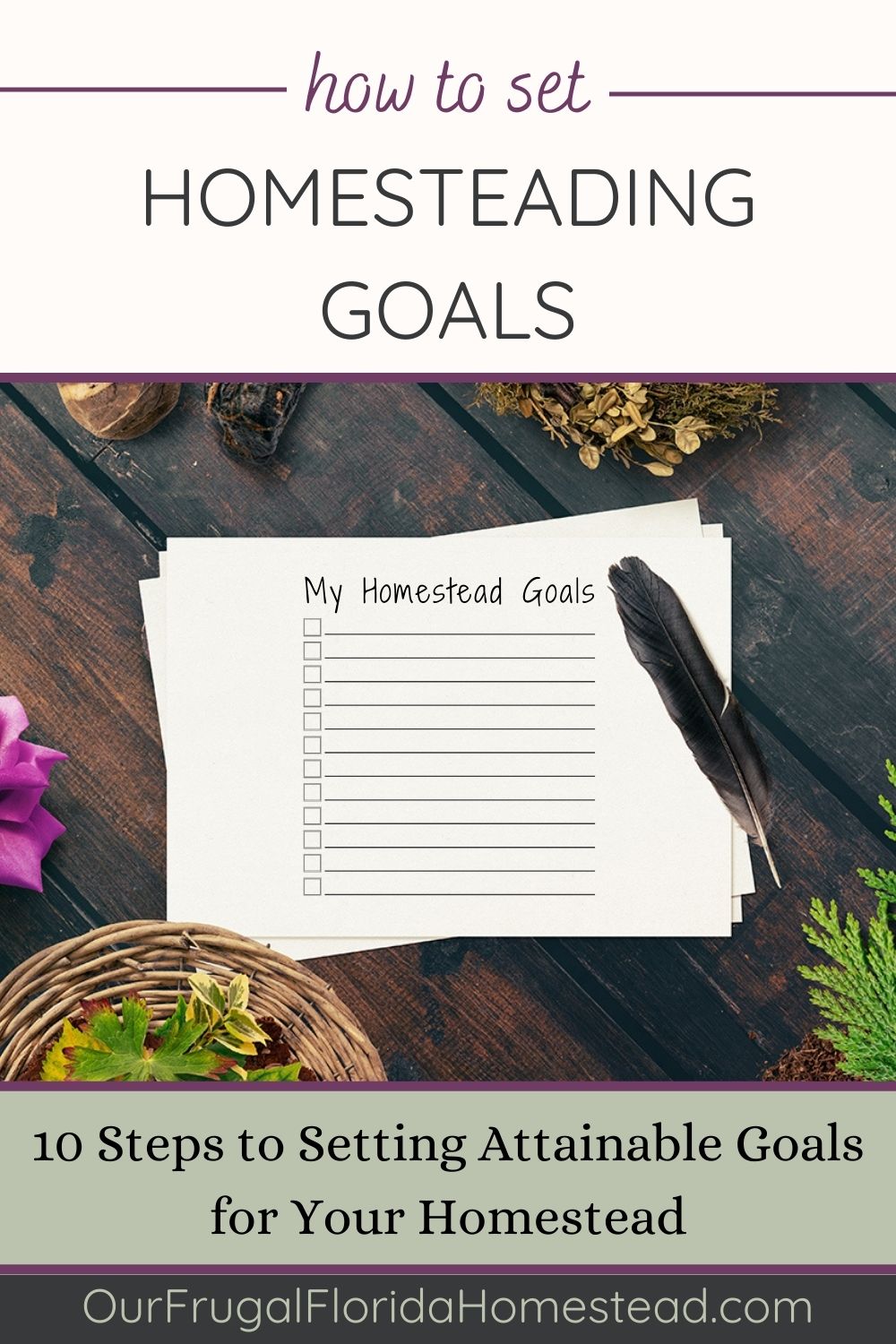What are your gardening goals for this season?
Whether it’s your first garden or your fiftieth, it’s a good practice to set goals for each growing season.
Focusing on what you wish to achieve whether it’s growing specific plants, improving your soil health, or maximizing a small space, will give you a clear direction to take as the season progresses.
This article will specifically address creating goals related growing and harvesting produce in the home garden using annual plants.
Here are steps you can take to make informed decisions that will create a productive garden season.
Table of Contents
- Why Should I Set Gardening Goals?
- Review Past Gardening Seasons – What Worked, What Didn’t?
- What do I Want to Harvest this Season?
- Do I Have the Seeds and Seedlings I Need?
- What is My Planting and Harvesting Timeline?
- Is My Garden Ready to Grow?
- New Projects for the Garden
- Gardening Goals FAQs
Why Should I Set Gardening Goals?
“There is a time to plan, a time to act, and a time to rest; it is wise to know which is which.”
– Emily Rodda
Wherever you are in your gardening journey, setting good goals will lead you down the path to success.
When you set goals, you:
- create a vision for your garden
- have a step-by-step plan
- Track your progress
- Record successes and failures
- Have a reference for future gardens
Some of the most common reasons people garden include: growing food for better health, garden therapy, self-sustainability, spending time in nature, and social connections such as community gardens or gardening groups.
Take Action:
Create a vision board, or make a simple list of reasons why you are growing a garden this season.

Review Past Gardening Seasons – What Worked, What Didn’t?
Do you currently have a garden journal or planner? Take time to review the past season’s notes. What were your successes or failures? Did you grow enough or too much of something? Was the size of your garden adequate?
If you didn’t keep records, or if you’re just starting, take a walk through your garden space. Make some notes either on paper or digital, or perhaps a video record is more your style. You can also use a free app like this one from SEEDTIME. I’ve had great success tracking my gardening activites!
I like to refer back to my garden journal and note when and what I planted, what pests or diseases I encountered, and how often I needed to water the garden. I then review my harvest records and pantry inventory lists to get an idea of what I need to grow more or less of the next season.
Take Action:
Make a list of what you’d like to do again and what changes need to be made. Note the successes and failures of the past gardening season.

What do I Want to Harvest this Season?
Now that you have a fresh, overall view of the past, you can make a plan for the future. This is often one of the most fun parts of setting garden goals.
Based on your record of previous harvests, consider:
- What are the foods we grew that my family enjoyed eating?
- Did I grow enough or too much last season?
- Will I grow them again, and if so, how much?
- What new foods would we like to grow?
- How will I harvest/prepare/preserve these foods?
- Can these foods be grown in my climate?
- Do I have enough time and space to grow these foods?
- What is my budget for seeds, plants, and pest and disease control?
Take Action:
Make a list answers to the above questions and any others you may include. Use this list to create a list of plants you want to grow this coming season and determine how much you need to grow. Use this calculator as a guide.

Do I Have the Seeds and Seedlings I Need?
Every winter, my mailbox is filled with numerous seed catalogs from my favorite seed companies. I enjoy sitting with a stack of them next to my comfy reading chair, sipping a hot cup of homegrown herbal tea, and dreaming of garlands of greenery dripping with fruits and veggies.
Probably 90 percent of everything I need to grow is already sitting in my seed storage, but it’s so much fun to dream and plan for the next growing season.
Take inventory of your seeds in stock and note what you may need to purchase. If you save seeds like I do, not having to purchase extra seeds will free up your purchasing power to buy more of something else.
I also keep sweet potatoes set aside to grow slip when we are close to the warmer growing season. In the coldest part of winter, I’ll gather herbs such as mint and rosemary and stick them in glass jars filled with water just in case we get that “once in a hundred years freeze” here in Central Florida.
When sourcing seedlings, try to find local nurseries that grow varieties best for your climate. Keep a list of what to buy, and stick to it. Unless you have unlimited space and time, you might end up regretting over-purchasing.
Take Action:
Have some fun reading your favorite seed catalogs. Find what you need as well as some inspiration for new plant varieties you may wish to grow. Dig into your seed stash and note what seeds you have available or what you need to purchase.
Use your list of plants you want to grow and make a shopping checklist for when you’re ready to stock up.
Make a seed wish list too. It’s a good starting point for future growing seasons.
Some of my favorite seed companies are:
- Annie’s Heirloom Seeds
- Botanical Interests
- Hoss Tools
- Johnny’s Selected Seeds
- Park Seed
- Southern Exposure Seed Exchange

What is My Planting and Harvesting Timeline?
Once you’ve decided what you want to grow, you’ll need to determine when to start seeds and plant seedlings. Again, using your garden journal from past seasons can make this happen in a matter of minutes instead of researching for possibly hours.
Make sure you’re aware of your first and last estimated frost dates to protect young plants. The USDA recently updated their Plant Hardiness Zone Map. Use this map as a planting guide, and be aware that your property may have specific micro-climates that are a bit warmer or cooler than the averages projected on the map.
One of the easiest ways I’ve found to plan and track my growing season is with a digital garden planner. I’ve been using the Seedtime Garden Planner’s free version for over a year now and it’s made planning super-simple. It has a calendar that autogenerates planting and harvesting dates based on your zip code. There are succession planting planners, task lists, a private Facebook group, and many other features. My favorite planning tool is the garden journal. It syncs with the garden calendar, and I can even upload photos to the journal.
Click here to try the free version of Seedtime.
I’ve also been exploring an app called Seed to Spoon. It’s more limited in the free version than Seedtime, but the paid version includes many of the benefits of similar apps.
Even if you simply pencil in your start and harvest dates on a calendar, any type of record is helpful.
Take Action:
Choose your record-keeping method and put down all your start dates for seeds, seedlings, and transplants. Then, write down harvest dates using estimates from your seed packets, a planning calculator like this one from Johnny’s Select Seeds, or have those dates pre-calculated for you in an app like Seedtime.
Is My Garden Ready to Grow?
Before you put your seeds and starts into the soil, is it ready to feed and support the plants?
Here is a list of garden tasks for preparing for a new growing season.
- Is the location suitable to growing my choice of plants?
- Do I need more or less growing space?
- Is the soil ready? Are weeds and debris removed?
- Do I need to test the soil, and what amendments will I need?
- What pest and disease controls am I using? Do I need to purchase any?
- Am I ready to irrigate and/or water the garden?
- Do I need shade cloth or insect netting?
- Do I have mulch if I’m using it?
- Are my garden tools ready and clean?
- Is my seed-starting setup ready? (lights, heat mats, growing medium, etc.)
- By what date do I need to purchase seeds and seedlings?
- What is unique about my garden that I need to prepare for?
Take Action:
Prep your garden space. Make sure you have everything you need before planting your garden.

New Projects for the Garden
As you reviewed past years harvests, walked your garden space, and dreamed with your seed catalogs, did you note any new things you’d like to pursue in your garden?
Perhaps you’d like to add more raised beds, create a pollinator garden, install irrigation, add an outdoor living space, or some other larger project. My friends at Bootstrap Farmer can help you find the perfect tools and supplies to take on those new projects.These items are also part of your garden goals.
When planning these types of projects, I use my Homestead Goal Planner. Every year we include our garden goals with other homestead goals. It makes planning time and money so much easier.
Take Action:
Using your vision board or list of ideas, make a plan to incorporate any changes to your garden. Set dates on a calendar, use a goal planner, or other method to record when you want to accomplish that goal. Make sure to budget both time and money for an achievable and successful goal.
It’s so enjoyable to watch your plans (and plants!) grow and blossom. By taking the time to set your goals and make plans you’ll reap the rewards of bountiful harvests.
Take time to bask in the satisfaction of a job well done. You may even want to record how special your garden is by journaling, writing garden poetry, creating a video log, or using some other creative method. How has your garden contributed to the overall health and well-being of you and your family?
“To plant a garden is to believe in tomorrow.”
-Audrey Hepburn
Gardening Goals FAQs
Q: Why is goal setting important for a gardener?
A: Goal setting provides direction and purpose in a garden. Goals help you prioritize tasks, make informed decisions, and achieve your desired outcomes.
Q: How do I determine realistic goals for my garden?
A: Consider factors such as available garden space, your skills as a gardener, other gardening partners, time for gardening, and finances available for garden inputs such as seeds, tools, and amendments.
Q: How do I prioritize my gardening goals?
A: Set goals based on importance and the cycle of plant growth. From seed to harvest, there’s a linear flow to gardening. Prepare the garden before planting, have your tools ready, and know how you’ll use the produce before you begin.
Q: Can I involve others in achieving my gardening goals?
A: Absolutely! Gardening is a great family activity. Some of my earliest childhood memories are of dropping seeds into rows, picking strawberries, and snapping green beans from my family garden. Joining a community garden is a great way to make new friends and share knowledge too.

[…] eating or for sponges—how to prepare and store them, and how to use them around your home. Plus, with a little planning, you can even save seeds for next season, ensuring a continuous supply of this frugal and […]